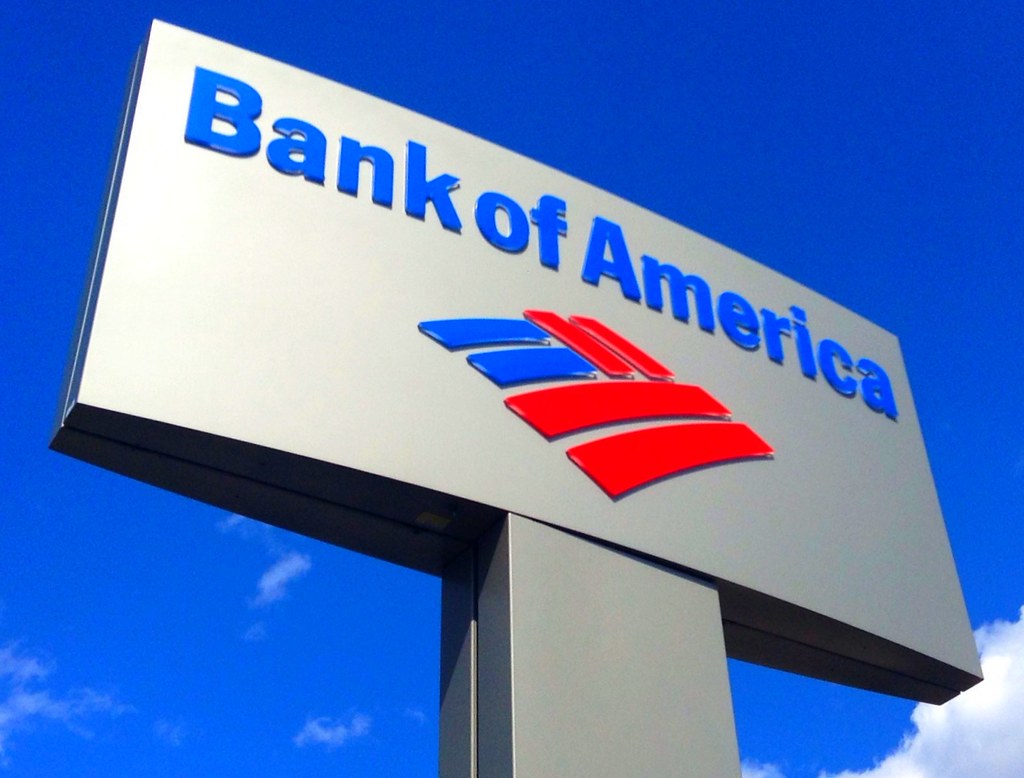Bank of America profit hurt by losses on credit cards, office loans
Investment banking fees jumped 35% to $1.6 billion from a year earlier, partially offsetting a decline in interest payments due to slow demand from borrowers. Last month, Borthwick said he expected investment banking revenue to jump 10% to 15% in the first quarter.

- Country:
- United States
Bank of America shares on Tuesday fell more than 3% after its first-quarter profits shrank and the bank set aside more money to cover souring loans from consumers whose finances are worsening. U.S. lenders have cited resilient household finances as evidence that the economy remains on a solid footing, but cracks are starting to show for the lowest-income consumers. While their spending remains robust despite rising borrowing costs, higher prices and shrinking savings, banks are preparing for more Americans to miss payments.
"The market has used Bank of America as the bellwether for consumer commentary," said David Wagner, a portfolio manager at Aptus Capital Advisors. "The weakness in credit card delinquencies caught them offside." BofA's net charge-offs, or debts that are unlikely to be recovered, rose to $1.5 billion in the first quarter from $807 million a year earlier, mainly from credit card losses. The charge-offs are from delinquencies in the fourth quarter, but are beginning to stabilize, said Alastair Borthwick, chief financial officer.
"The main economic hangover for Bank of America as well as most other banks is that Federal Reserve interest rates may not decline as quickly as previously expected," said Michael Ashley Schulman, chief investment officer of California-based investment firm Running Point, which advises wealthy families. "Therefore they may see an uptick in consumer and business delinquencies and defaults, especially from real estate. One good quarter from the bank is not going to allay these macro concerns."
Despite Tuesday's decline, BofA shares were up about 3% this year, lagging the S&P 500 bank index's 4.7% increase and a 6% gain for rival JPMorgan. BofA's net interest income (NII) — the difference between what it earns on loans and pays for deposits — slid 3% to $14 billion as it paid more to customers to park their money while demand from borrowers stayed modest. But it was turning more optimistic.
"We continue to expect that Q2 will be the low point for NII and we expect the back half of 2024 to grow," Borthwick told analysts on a conference call on Tuesday. JPMorgan, the largest U.S. lender, slightly increased its estimate for NII, disappointing investors who hoped that the bank would reap even greater benefits from a prolonged period of higher interest rates.
BofA's CEO Brian Moynihan told analysts the bank had cut the workforce by more than 4,700 employees from the first quarter of 2023. SHIFTING EXPECTATIONS
Excluding one-off items, Bank of America earned 83 cents a share in the first quarter, ahead of analysts' average estimate of 76 cents a share, according to LSEG data. Still, shifting expectations for U.S. interest rate cuts and an uncertain economic outlook have made it more difficult to predict future profits, banking executives said last week.
If the Federal Reserve keeps rates higher for longer in the coming months, lenders that made bumper profits from rising interest rates in the last two years could build on their gains. But their earnings could diminish if a potential economic slowdown deters borrowers from taking out loans. "Generally speaking, higher for longer is probably better for banks," said Borthwick. "Inflation is under control ... that appears to be the case. So that's obviously a good place."
A resilient U.S. economy, buoyant equities and a flurry of large deals have reignited hopes of a nascent recovery in dealmaking, although industry executives have expressed guarded optimism. Investment banking fees jumped 35% to $1.6 billion from a year earlier, partially offsetting a decline in interest payments due to slow demand from borrowers.
Last month, Borthwick said he expected investment banking revenue to jump 10% to 15% in the first quarter. Revenue from the segment also rose at rival JPMorgan and Citigroup in the first quarter, fueled by gains in debt and equity capital markets.
BofA's sales and trading revenue rose 2% to $5.2 billion with equities contributing a 15% jump and fixed income currencies and commodities posting a 4% decline. COMMERCIAL REAL ESTATE
Bank of America set aside $1.3 billion in provisions for credit losses in the first quarter, up from $931 million a year earlier. It also took more writedowns on office loans, which partly increased loan losses for its commercial division. Still, its CFO said the lender had limited commercial real estate exposure and was reviewing ratings, property appraisals and sales. Revenue from Bank of America's consumer unit sank 5% to $10 billion in the quarter, primarily due to lower deposit balances.
Bank of America also took a $700 million charge in the reported quarter to replenish a government deposit insurance fund, drained by $16 billion to cover depositors of two banks that collapsed in 2023. Profit from BofA's Merrill wealth management division rose about 10% to $1 billion as rising equity values generated higher fees with record revenue and client balances.
The division grew assets under management to $1.4 trillion from $1.3 trillion in the fourth quarter.
(This story has not been edited by Devdiscourse staff and is auto-generated from a syndicated feed.)










